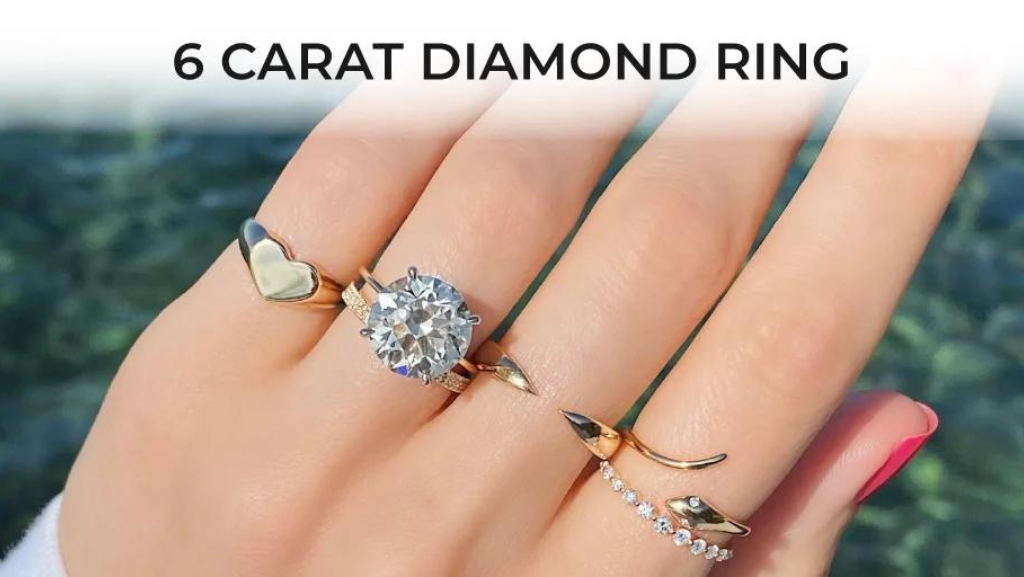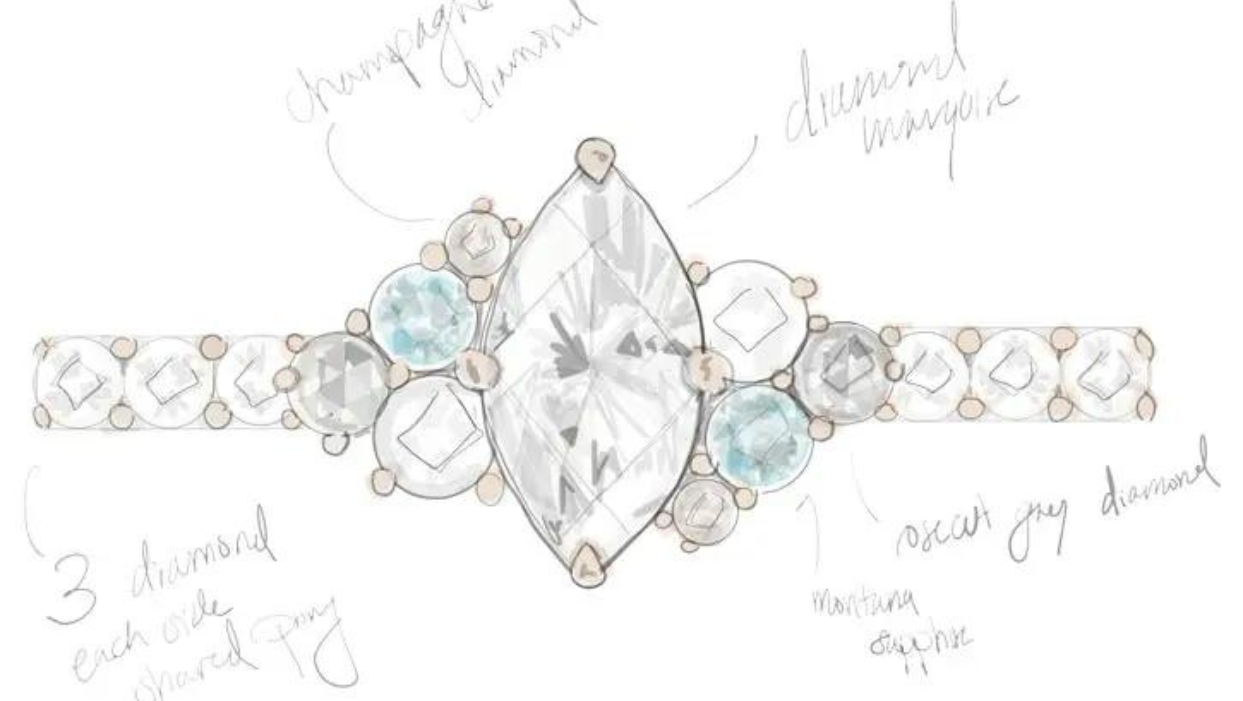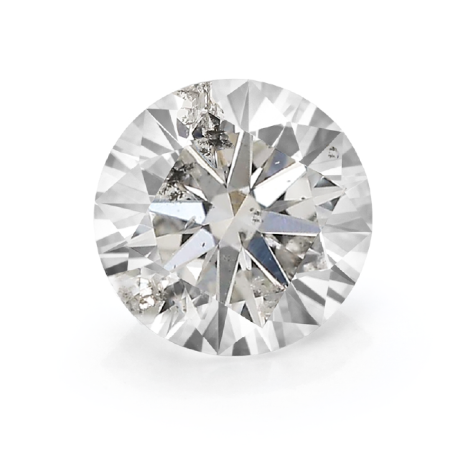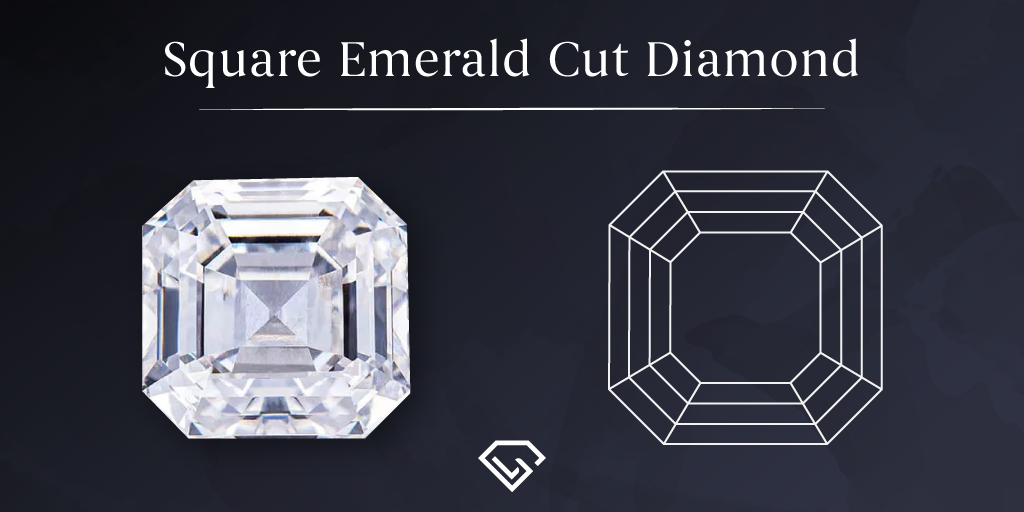A VS2 Diamond Clarity Guide: Should You Buy Them or Not?
When we talk about a lab diamond, it’s important to know its value and what to look for. There are many factors to consider, such as shape, size, and the 4Cs (color, cut, clarity, and carat). The factor we are going to pay attention to here is clarity, specifically VS2 diamond clarity.
Clarity is a measure used to evaluate a diamond’s appearance. Assess the number of blemishes and inclusions present in diamonds.
While shopping for an engagement ring, you obviously are looking for a lovely diamond in your budget. What beauty means may vary from individual to individual, but what is not liked in diamonds is pretty constant. It is generally accepted that lab diamonds with large visible inclusions are not beautiful.
Visible blemishes are one of the biggest factors in determining how much you can sell a diamond for if you want to upgrade your gemstone in the future.
What you need is a clean eye diamond, one that looks perfect when someone looks at it and has no visible defects or impurities. This is where VS2 diamonds come into play. They offer the best balance of clarity and price among all clarity levels. VS2 diamond is the most recommended transparency level when helping people find the best engagement ring that fits their budget.
What Is VS2 Clarity?
VS2 stands for Very Slightly Included Level 2 and is considered a level above the average diamond. This clear diamond sits comfortably in the middle of the overall clarity grading scale. It also represents a high-quality lab diamond that realistically matches a flawless appearance under normal conditions.
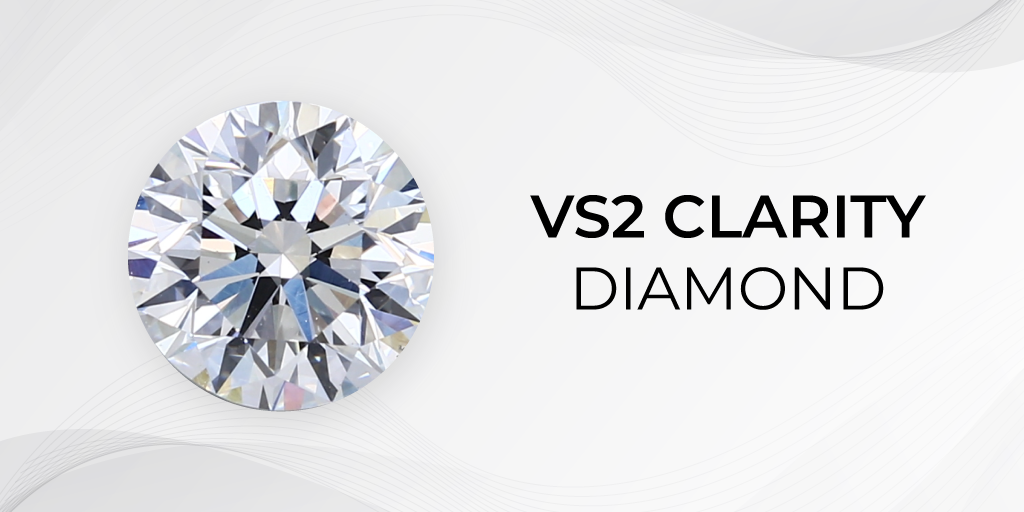
A VS2 diamond is a lower grade of VS clarity. VS2 inclusions are most clearly visible at 10x magnification. Most diamonds under 2 carats have VS2 inclusions, which are almost impossible to see with the naked eye.
In this type of diamond, the inclusions may be situated in places that are difficult to see. Yet, most inclusions are big enough to be seen right away when the stone is put under a microscope.
VS2 diamonds are considered the optimal balance between price and quality. The lower SI1 and SI2 diamonds are questions regarding the clarity of the lab diamond. The higher VVS1 and VVS2 diamonds are far beyond ‘eye clean. In other words, you are paying a higher price for a product that is indistinguishable from a lab grown diamond with a lower clarity grade that is also eye-clean.
These diamonds are classified as high quality but are less expensive than the VVS1 or VVS2 (very very slightly included). If your budget is not for VVS1 or VVS2 but clarity still matters, then VS2 is the best choice for you. You’ll eventually find most diamond buyers drawn to VS2 as it allows them to more comfortably view enlarged diamond images that can make even the smallest inclusions incredibly clear.
Pros and Cons of VS2 Diamonds:
Pros:
- Inclusions not visible without magnification
- Affordable yet high-quality option
- Can be comparable to VS1 if selected carefully
Cons:
- Inclusions become noticeable under 10x magnification
- Flaws are emphasized with higher carat weight
- Not the ideal choice for step-cut styles
Are VS2 diamonds Eye-Clean?
When buying an eye-clean diamond, the presence of inclusions should not psychologically affect your purchase. It must be acknowledged that lab grown diamond inclusions are normal, even if they cannot be seen with the naked eye.
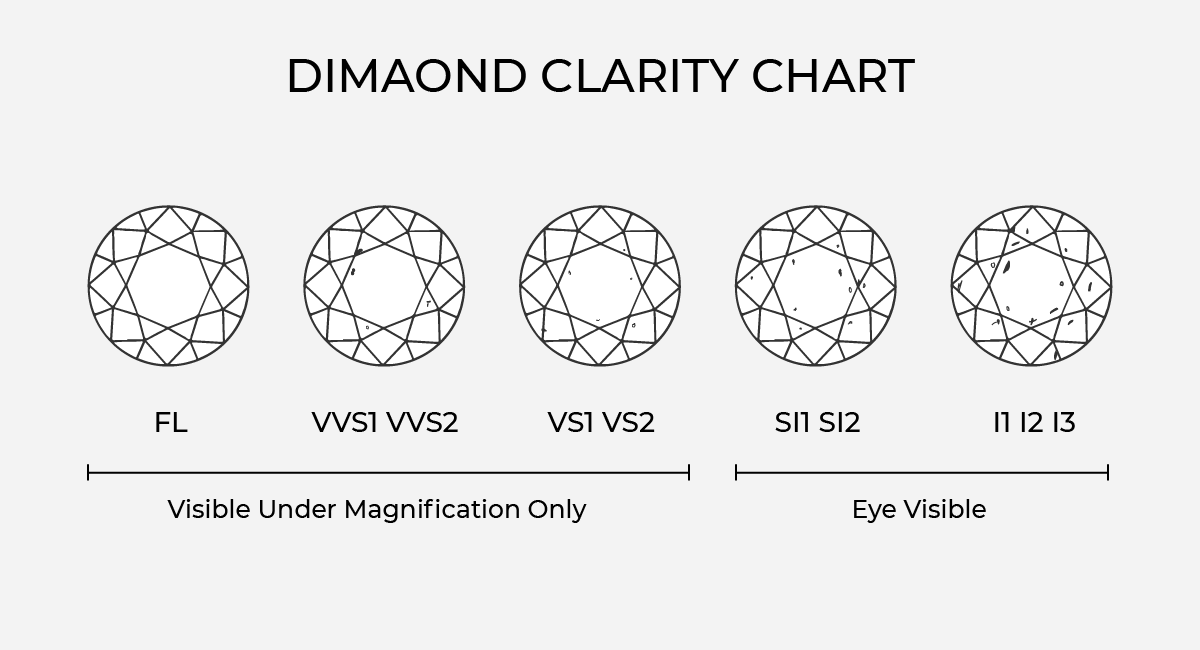
It is suggested that when buying a diamond, look for one that has its inclusions scattered throughout the stone. Transparent or whitish inclusions are also preferable over dark ones.
Dark inclusions are the worst. Not only are they more visible to the naked eye than ’clear’ or ‘white’ inclusions, but they also block and absorb light reflected inside the diamond. This means that the presence of dark impurities not only makes the lab diamond less clean to the eye but also reduces its shine.
The worst position for inclusions is in the middle of the table. These inclusions are more visible than if they were placed on the side/girdle of the lab diamond under a smaller, denser facet.
If you choose a diamond that looks clean and has been checked for clarity, you will get a stone with the same image quality as a premium diamond (FL-VVS), but for a lot less money.
Shape
Carat
Cut
Color
Clarity
Price
cushion
6.00
Ideal
F
VS1
$2876 $2739
View
emerald
6.03
Ideal
E
VS1
$9895 $7421
View
round
6.04
Ideal
E
VVS2
$14093 $10841
View
asscher
6.00
Ideal
H
VS2
$3993 $2995
View
oval
6.04
Ideal
F
SI1
$2751 $2063
View
round
6.00
Ideal
F
SI1
$2091 $1777
View
emerald
6.09
Ideal
G
VS1
$2513 $1885
View
round
6.01
Excellent
F
VS2
$2927 $2488
View
round
6.03
Ideal
F
VS2
$2579 $2192
View
round
6.06
Ideal
G
VS2
$2260 $1921
View
round
6.05
Ideal
F
VS2
$2587 $2199
View
round
6.10
Ideal
H
SI1
$9188 $7810
View
emerald
6.10
Ideal
G
VVS1
$12111 $8651
View
oval
6.01
Ideal
H
VVS2
$5188 $3706
View
oval
6.05
Ideal
G
VS1
$4869 $3478
View
oval
6.10
Ideal
G
VVS2
$6404 $4574
View
oval
6.06
Ideal
F
VS1
$8299 $5928
View
oval
6.10
Ideal
F
VS1
$11115 $7939
View
pear
6.04
Ideal
H
VS2
$5144 $3674
View
round
6.01
Excellent
E
VS2
$10899 $8384
View
Is VS2 Clarity Good?
VS2 clear diamonds may appear perfectly clean or may contain inclusions, depending on the type and location of the inclusions. However, most VS2 Clarity diamonds are well worth their price and offer excellent value.
If you are looking for the best balance between quality and value, you should take a look at the VS2 clarity grade diamonds. Diamonds of this variety are cheaper because they are minutely blemished and their defects and inclusions are not visible to the naked eye.
If a diamond has many inclusions, it will affect its overall appearance. The greater the inclusion, the easier it is to attract attention (in a negative way), especially if its colors are contrasting.
A VS2 grade diamond usually has a few small inclusions or one or two large inclusions, but the presence of these inclusions does not distract individuals from the diamond’s overall beauty.
Your goal when buying diamonds should be to find gems that are clear to the eye. This means there are no visible defects, and many VS2 diamonds are considered eye-clean.
However, not all VS2 diamonds necessarily look clean, so it is important to carefully inspect them for clearly visible inclusions. Inclusions are also easier to spot on larger diamonds and certain diamond cuts/shapes, such as asscher or emerald cuts. VS2 may be slightly lower in these cases. However, for regular-sized round diamonds, this degree of clarity is sufficient.
Inclusions are more visible to the naked eye in diamonds of higher carat weight. In diamonds of high carat weight, inclusions are more visible to normal vision. The larger the diamond, the greater the surface area at which defects can be detected.
A VS1 or VS2 is usually sufficient for diamonds under 2 carats, but the same grade may not be sufficient for high carat diamonds. Also, consider higher clarity ratings when viewing diamonds larger than 2 carats. Regardless of the grade, you will still want to focus on choosing a diamond that is clean to the eye. You may be able to find pure VS2 diamonds.
VS2 Diamond Quality
A VS1 diamond is of the highest quality, with no visible imperfections. Even under 10x magnification, any inclusions are nearly impossible to identify. These diamonds belong to the top 5 percent of all gem-quality stones.
On the other hand, VS2 diamonds may have visible inclusions only 5 percent of the time, mainly in stones over 1 carat. VS2 diamonds, however, exhibit more noticeable natural characteristics that are larger and easier to spot.
VS2 Diamond Price
The VS2 diamond price depends upon other factors such as carat weight, cut quality, color grade, and even diamond shape. Clarity is the best region to save some cash.
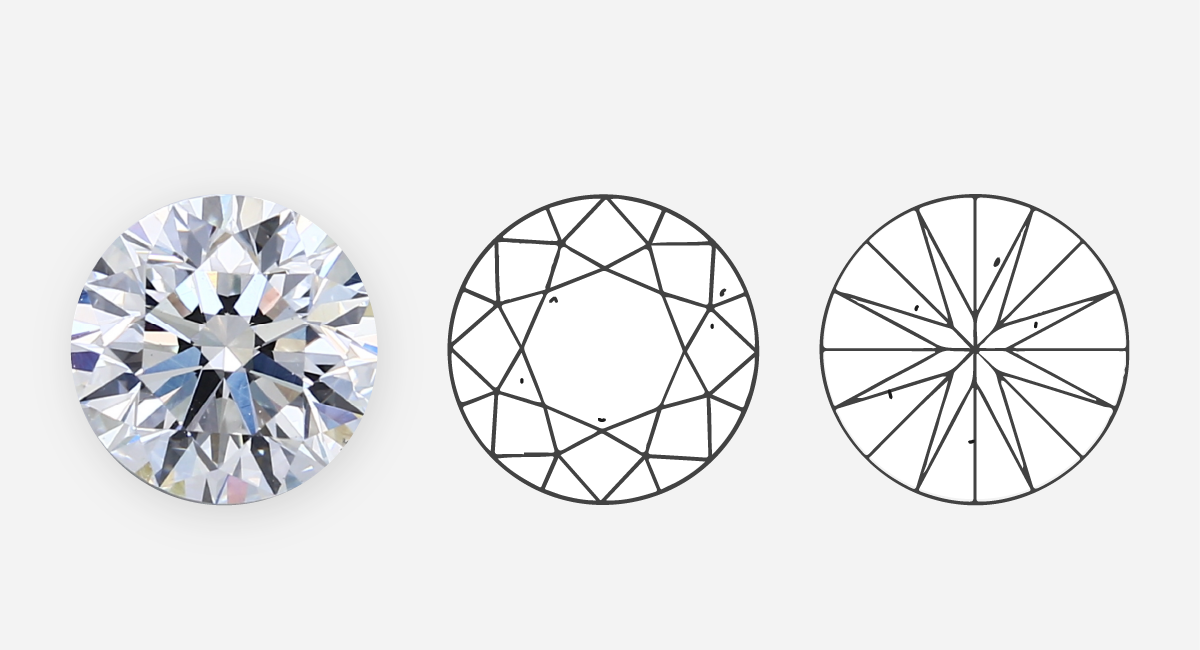
The price difference between different levels of transparency is often surprising. VS2 Clarity is included in an optimal position with which you can usually get very good value for money.
Despite minor imperfections, VS2 diamonds tend to be much cheaper than diamonds with high clarity. One of the main strengths of this stone is that VS2 diamonds are virtually indistinguishable from unblemished diamonds to the naked eye, only adding to their attractiveness.
Best of all, the low definition doesn’t necessarily mean sacrificing beauty and appearance. Gemstones with many small inclusions or a few noticeable inclusions are rated with a low transparency rating. The lower the transparency rating, the lower the overall price will be.
As mentioned earlier, VS diamonds are barely visible to the naked eye. Here, both VS1 and VS2 diamonds often offer a combination of beauty and value, where a flawless diamond can be found without paying more than is necessary.
A flawless 1.50 carat round diamond typically retails for around $5000- $8,000 in the market. By comparison, a similar cut in the VS2 class costs $3,000- $4,000. Yet both diamonds look nearly identical to the naked eye. However, as the number of carats increases, the price will also increase.
Do Weight and Cut Matter When It Comes to Vs2 Diamond?
A bigger carat doesn’t necessarily mean you’ll need to spend more. Inclusions may be more visible on larger diamonds, but it is important not to limit yourself to seeing only the perfect option.
As carat weight increases, the visibility of inclusions also increases. For this reason, many people aim for higher clarity for larger diamonds.
If a diamond weighs between 1 and 2 carats and is rated VS2, you can be sure of its value. However, as the carat size increases, you should check for inclusions. There should be no dissimilarity between a 2-carat VS2 diamond and a flawless diamond of the same weight unless you use a 10x magnifying apparatus.
Plus, inclusions in step-cut diamonds are easier to spot. A step-cut diamond refers to a square or rectangular cut stone. These include baguettes, emeralds, and Asscher diamonds. If you have inclusions in your VS2 diamond, it’s worth upgrading to VS1 or above to get the most out of your diamond experience.
Instead, you should broaden your search to include VS2 diamonds as well as VS1 and VVS2 diamonds when looking for larger carat diamonds. Oftentimes, VS2 diamonds look neat and clean to the naked eye, but they are not as valuable as flawless gems. Most importantly, diamonds look amazingly clean and neat, regardless of their clarity.
The Best Shapes for VS2 Diamonds
VS2 clarity does not always guarantee that you will receive an eye-clean diamond. Whether or not they look clear to the naked eye depends on things like the quality of the cut (defects are easier to hide when the light output is higher), the color of the inclusions, and the shape or type of defect.
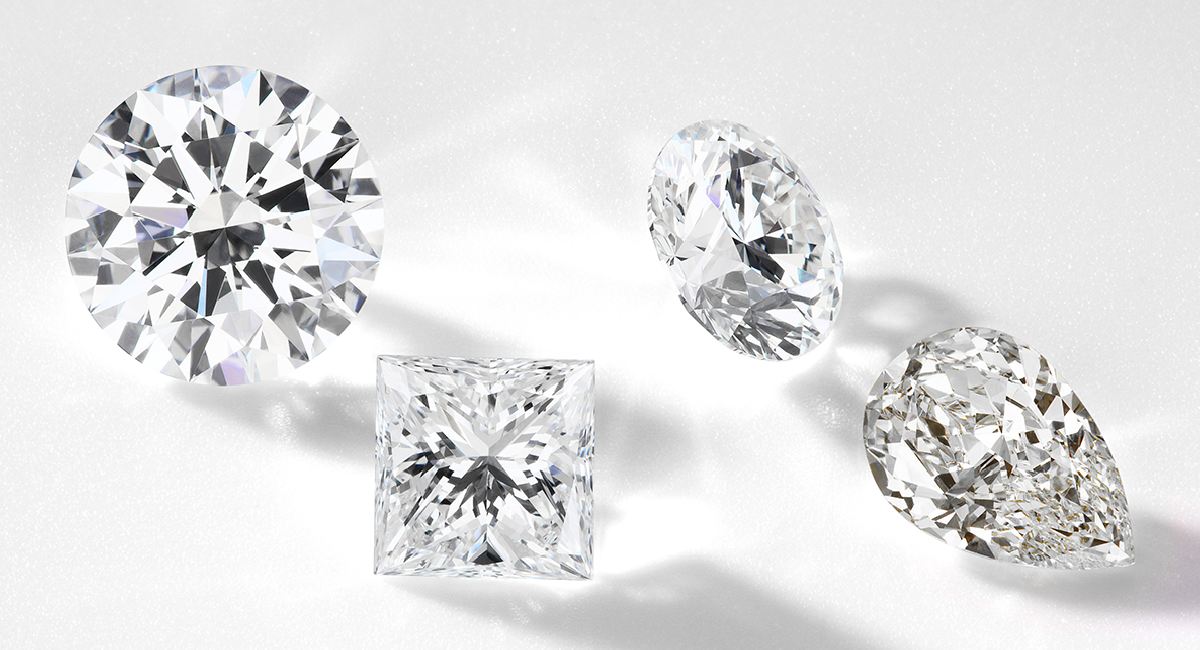
It’s important to know because the VS2 purity level may be good for one shape, but too low for another. In showing imperfections, some diamonds are better or some are worse than others. The shape and size of the diamond also play an important role. This diamond size chart will give you a thorough approach to identifying your size.
These diamond shapes are characterized by long, straight, parallel facets, and all the markings are fairly distinct. But the same flaws may be hidden in round brilliant-cut diamonds such as round, oval, cushion, pear-shaped diamonds, or smaller emeralds. The flaws in the emerald diamond are easy to see due to having a big table.
Spherical gems manage to glow brighter, so they hide flaws much better than other types of cuts. Rounds are said to be safer but more susceptible to damage because of their spherical shape.
Another ambiguous example of eye-clean quality is the princess cut VS2 diamond. It is rated for very light clarity 2. Given the size and location of these impurities, they will most likely be visible to the naked eye.
VS2 vs VS1 Diamond
VS1 and VS2 are roughly in the middle of the GIA diamond clarity scale, and both have small inclusions when viewed at 10x magnification.

Compared to VS2 clarity diamonds, VS1 clarity diamonds have fewer inclusions, which are smaller and harder to find. In addition, VS2 diamonds often have impurities in worse places and are easier to see. If we take a case in which both examples have the same number of defects.
However, if one of these diamonds has a flaw in an inconspicuous area, such as the side of the lab created diamond, it may receive a VS1 grade. On the other hand, a diamond with the same defect in a very prominent location, such as in the center or just at the top of the diamond, is more likely to receive a VS2 rating.
VS2 and VS1 diamonds tend to have only a few inclusions but are more affordable than diamonds ranked higher on the clarity scale. It can be difficult to tell the difference between FL and VS diamonds with the naked eye but still, they are much cheaper than flawless diamonds.
For this reason, experts recommend VS1 and VS2 diamonds as an excellent combination of quality and value. They are an excellent choice for those looking to buy high-quality, beautiful diamonds (such as engagement rings, wedding rings, and other diamond jewelry) without spending a lot of money.
Should I Buy A VS2 Diamond?
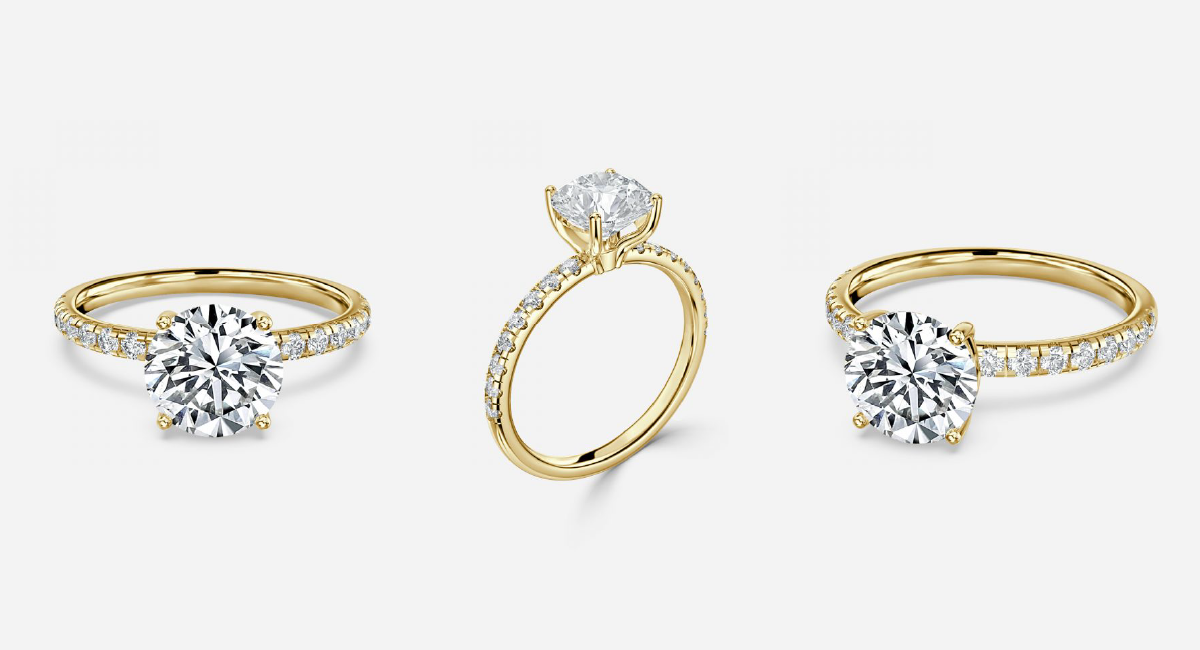
Ultimately, the VS2 diamond can be a great choice for an engagement ring. Choosing a diamond with a lower clarity grade can save you money. However, finding the right diamond for you can take time.
If you’re thinking about buying a VS2 diamond, please check out these tips.
- Carefully inspect the selected diamond for inclusions or defects. It’s a good place to start if you don’t see any noticeable blemishes.
- VS2 diamond inclusions are not visible to the naked eye. If you can see them without magnification, it’s not a VS2-grade diamond.
- Ask the diamond professional to show you any inclusions that can be seen using 10x magnification.
- If the inclusions are present in the middle or near the pavilion, they will be more noticeable. Diamonds with such inclusions are rated lower. The inclusions near the belt are hard to see even when magnified. That’s good
- Feathers, natural elements, clouds, needles, and crystals are among the elements included.
If the shape and durability of your diamond are important to you, don’t buy a diamond with large feather inclusions in the corners. - Do not buy diamonds with chips, cavities, knots, or etched channels. Its durability and beauty may decrease based on the intensity of these.
- The shape is important. Princess, oval, cushion and emerald cuts tend to be cheaper than round diamonds of the same carat size.
- Some cuts show more clarity, so if you’re interested in a specific round diamond, it’s a good idea to upgrade to the VS1.
- Don’t overpay for clarity. VS1 or VS2 diamonds are as clear as FL diamonds but much cheaper. Your budget is better spent on factors that have a greater impact on the beauty of a diamond, such as the quality of the cut.
- If your lab created diamonds are memories for future generations, do as much research as possible before preparing your eternal stone.
You can view actual photos and videos of diamonds on websites and train your eyes to better evaluate inclusions. These high-resolution photos and videos are an easy way to spot problematic inclusions.
We at Loose Grown Diamonds offer this feature for all our diamonds. You can visit our store to find out more or you can check out our online diamond inventory as well.
We recommend that you look closely at the lab grown diamond in high-quality photos before purchasing. This way, you have a clear understanding of what to expect.
Additionally, explore exclusive savings with our promo code when elevating your diamond shopping experience.
FAQs
How much is a VS2 diamond worth?
A VS2 diamond typically begins at around $500-$700. However, it’s important to note that various factors, including carat weight, color, and cut quality, can influence the overall price of the diamond.
What is a VS2 diamond?
A VS2 diamond is classified as “Very Slightly Included 2” on the diamond clarity scale, positioned one grade below VS1 and one grade above SI1.
Is VS2 clarity good for an engagement ring?
Yes, VS2 is a popular choice for engagement rings as it provides a good balance between quality and affordability. The inclusions do not significantly affect the diamond’s appearance.


